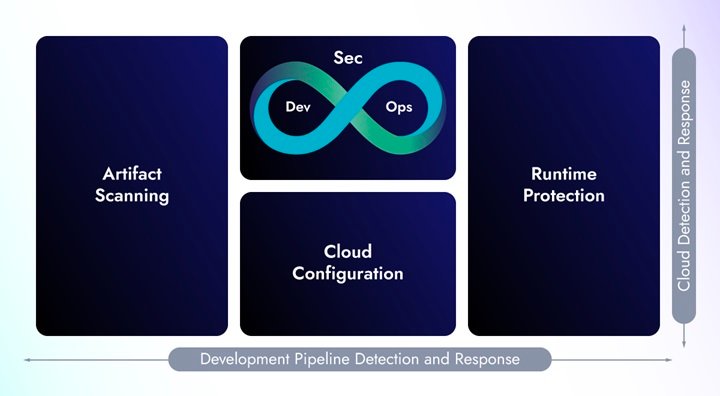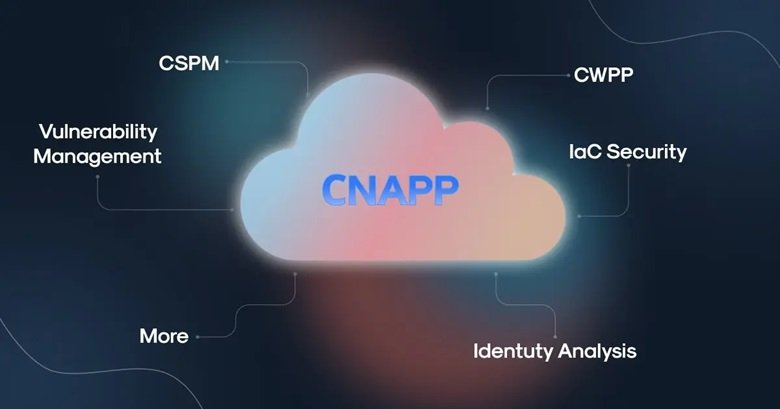Table of Contents
Hey there, cloud enthusiasts! 🌥️ Let’s dive into an exciting and essential topic in the world of cloud computing – CNAPP, or Cloud-Native Application Protection Platform. If you’re managing or migrating to a cloud environment, this is something you need to be familiar with.
What is CNAPP?
First things first, let’s decode this acronym. CNAPP stands for Cloud-Native Application Protection Platform. It’s a security solution specifically designed to address the unique challenges and risks associated with cloud-native environments. Simply put, CNAPP provides centralized cloud risk visibility, helping organizations manage and mitigate risks across their cloud infrastructure.
The Rise of Cloud-Native
With the surge in cloud adoption, businesses are increasingly relying on cloud-native applications. These are applications designed and built to operate in the cloud, leveraging its scalability, flexibility, and resilience. However, this shift comes with its own set of security challenges.
Why Do We Need CNAPP?
Imagine you’re the IT manager of a growing tech company. You’ve got applications running on various cloud services like AWS, Azure, and Google Cloud. Each platform has its own set of security tools and protocols, making it a nightmare to get a unified view of your security posture. This is where CNAPP steps in.
Centralized Visibility
CNAPP consolidates all your security data into a single, unified dashboard. No more jumping between different platforms and tools to understand your security status. Everything is right there in one place, providing you with comprehensive visibility into your cloud environment.
Proactive Risk Management
Cloud-native environments are dynamic and constantly changing. Traditional security solutions often struggle to keep up. CNAPP, however, is built to handle the dynamic nature of the cloud. It continuously monitors your cloud environment, identifies potential risks, and provides actionable insights to mitigate those risks before they become critical issues.

Real-Life Example: CNAPP in Action
Let’s bring this to life with a real-world example. Meet Samatha, the CTO of a mid-sized e-commerce company. Her team has been pushing hard to migrate their infrastructure to the cloud to leverage its benefits.
The Challenge
As they transitioned, Samatha quickly realized the complexity of managing security across multiple cloud providers. Each provider had its own security tools, and her team was struggling to maintain a consistent security posture. They were spending too much time reacting to security alerts rather than proactively managing risks.
The Solution
Samatha decided to implement a CNAPP solution. With CNAPP, her team gained a unified view of their entire cloud environment. The platform continuously monitored their infrastructure, identified potential risks, and provided detailed insights on how to address them.
The Outcome
The results were immediate and impactful. Samatha’s team could now focus on strategic initiatives rather than getting bogged down by security alerts. They had a clear understanding of their security posture and could proactively manage risks. This not only improved their overall security but also boosted the team’s efficiency and confidence.

Key Features of CNAPP
Now that we’ve seen CNAPP in action, let’s explore some of its key features:
1. Unified Dashboard
A single pane of glass that provides comprehensive visibility into your cloud environment, making it easier to manage and monitor security.
2. Continuous Monitoring
CNAPP continuously monitors your cloud infrastructure, identifying potential risks and providing real-time alerts.
3. Risk Prioritization
It helps prioritize risks based on their potential impact, allowing you to focus on the most critical issues first.
4. Automated Remediation
Some CNAPP solutions offer automated remediation, taking corrective actions to address security issues without human intervention.
5. Compliance Management
CNAPP helps ensure compliance with industry standards and regulations by continuously monitoring and auditing your cloud environment.
Why CNAPP is a Game-Changer
In the rapidly evolving world of cloud computing, having a robust security solution like CNAPP is crucial. It not only provides centralized visibility but also helps manage and mitigate risks proactively. For businesses, this means enhanced security, improved efficiency, and peace of mind knowing their cloud environment is well-protected.
Conclusion
CNAPP is transforming the way organizations manage security in cloud-native environments. With centralized cloud risk visibility, continuous monitoring, and proactive risk management, it’s a game-changer for businesses operating in the cloud.
So, whether you’re a CTO like Samatha or an IT manager looking to streamline your cloud security, CNAPP could be the solution you need. Stay ahead of the curve, and keep your cloud environment secure and efficient with CNAPP.
Happy cloud computing! ☁️🔒

Frequently Asked Questions (FAQs) on CNAPP
What is a CNAPP?
A CNAPP, or Cloud-Native Application Protection Platform, is a security solution designed specifically for cloud-native environments. It provides centralized visibility and management of cloud security risks, continuously monitoring your cloud infrastructure to identify and mitigate potential threats.
What is the difference between CNAPP and SASE?
CNAPP (Cloud-Native Application Protection Platform) and SASE (Secure Access Service Edge) serve different purposes in cloud security. CNAPP focuses on securing cloud-native applications and infrastructure by providing centralized risk visibility and management. On the other hand, SASE combines network security functions with WAN capabilities to support the secure and efficient access of users to applications and services, typically in a distributed or remote work environment.
What does CNAP stand for in cloud?
In the context of cloud computing, CNAP stands for Cloud-Native Application Protection. It refers to the suite of security practices and technologies designed to protect applications that are built and deployed in cloud environments.
What is the difference between CNAPP and CWPP?
CNAPP (Cloud-Native Application Protection Platform) and CWPP (Cloud Workload Protection Platform) both aim to secure cloud environments but have different focuses. CNAPP provides a comprehensive, centralized view of cloud security, covering applications, infrastructure, and more. CWPP, however, is specifically designed to protect cloud workloads, such as VMs, containers, and serverless functions, from threats and vulnerabilities.
What is the difference between CNAPP and CSPM?
CNAPP (Cloud-Native Application Protection Platform) and CSPM (Cloud Security Posture Management) are complementary security solutions. CNAPP offers a broader security coverage, providing centralized visibility and management for cloud-native applications and infrastructure. CSPM focuses on ensuring compliance and best practices in cloud configurations, identifying misconfigurations and compliance risks within cloud services. Essentially, CSPM is a component of the broader capabilities provided by CNAPP.




Leave a Reply